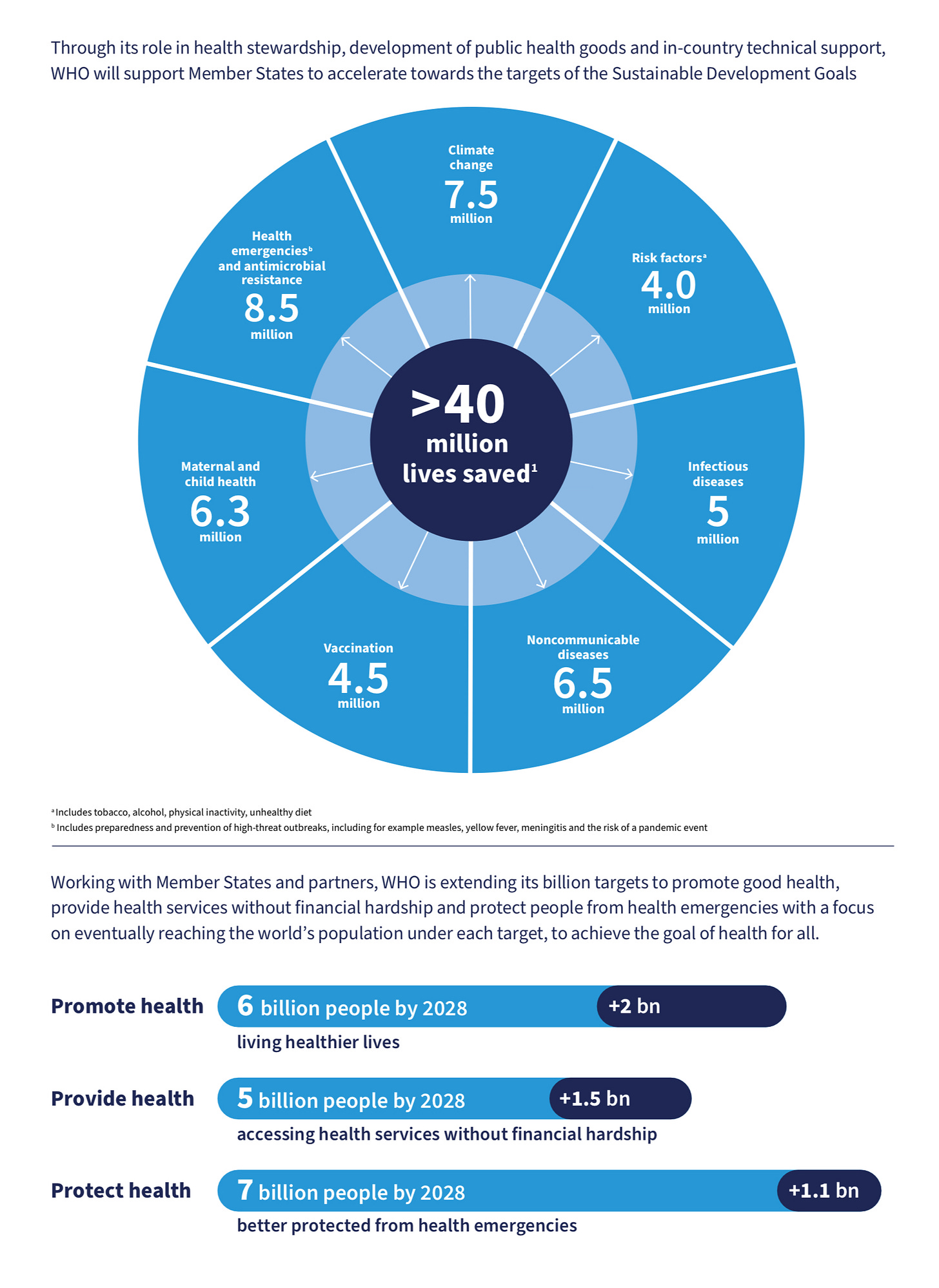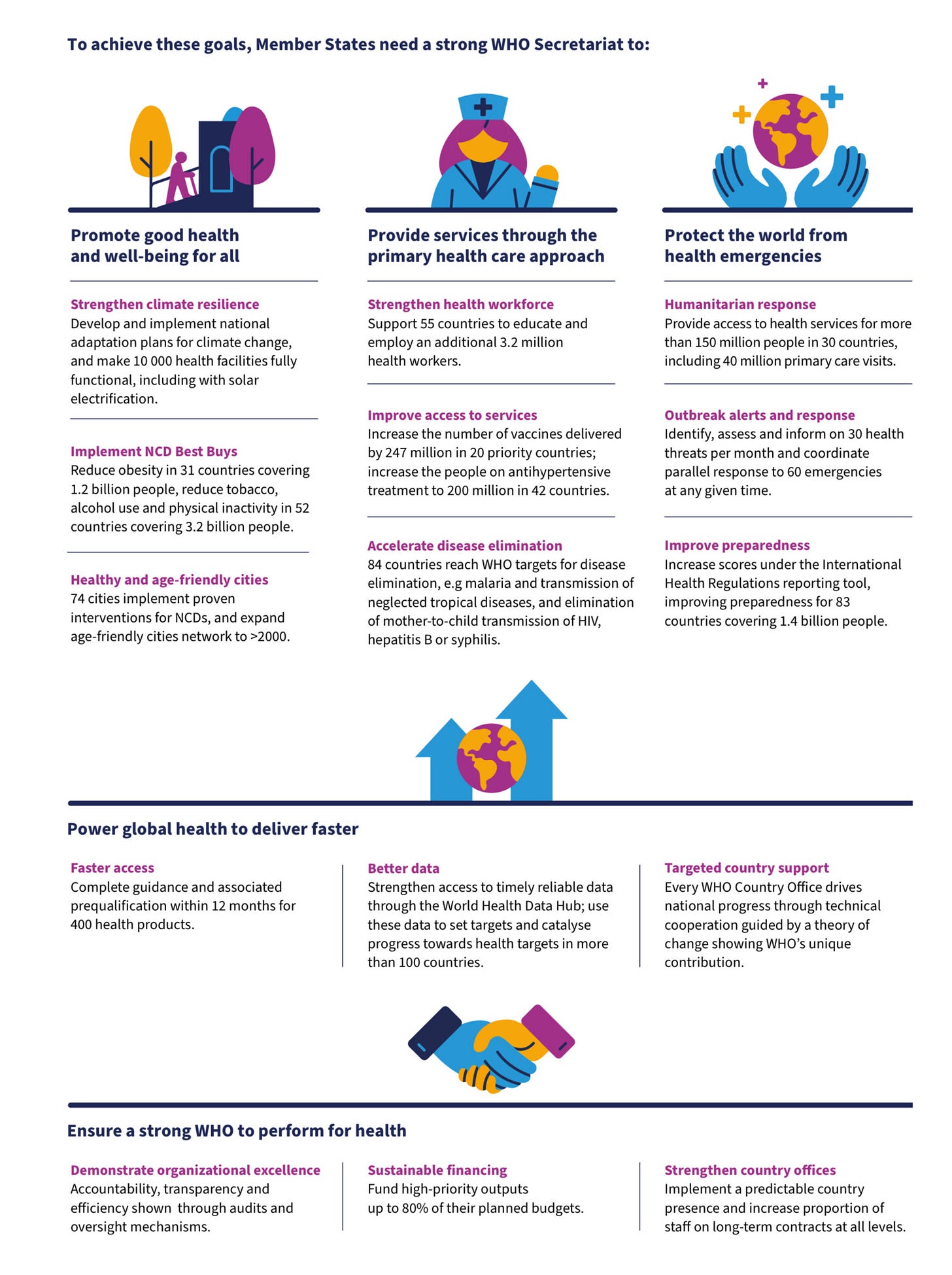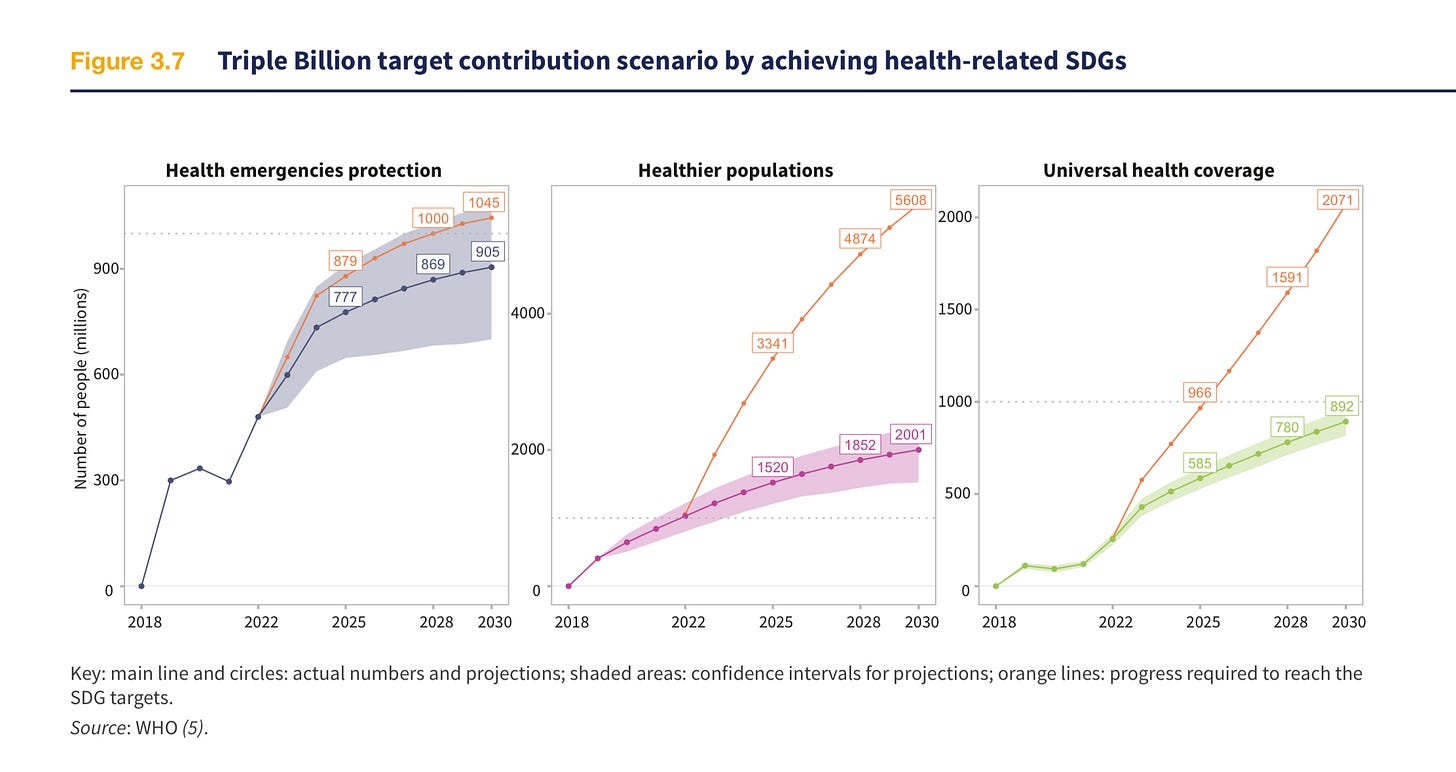Results-based WHO: The path forward
When he came to WHO in 2017, Dr Tedros’ goal could be stated in four words: measurable impact in countries. In the 7 years since, there have been significant strides towards a more results-based WHO. I had the privilege of supporting this goal from inside WHO, as Dr Tedros’ Special Advisor, for the first 6 years and from outside WHO since, where I have undiplomatically called this the GSD (Get Sh*t Done) approach.
But the job is not yet done. In June 2024, MOPAN (an organization of Member States that assesses multilateral organizations and champions learning to strengthen results and promote accountability) released its assessment of WHO 2019-2023. The first area of improvement cited: “WHO needs to better demonstrate how its activities and outputs make a plausible contribution to the health outcomes it seeks to achieve.”
In my last blog, I took stock of progress towards a results-based WHO, and highlighted remaining gaps, following the publication of WHO’s strategy (14th General Programme of Work, known as GPW 14). Here, I update this assessment to take account of the recent publication of WHO’s investment case and results framework. These move us closer to a results based WHO and I support full funding of the investment case. My main conclusion: the foundations for a results-based WHO have been laid and what is needed now is to implement them, especially in relation to results-based governance, budgeting, and country offices. I also suggest a better approach to innovation.
Investment case
WHO recently published its third investment case. The first focused on how many lives WHO could save based on its triple billion targets (healthier populations, UHC, and health emergencies). The second focused on value for money and concluded that for each $1 dollar invested in WHO there is a return of $35. This third investment case incorporates these insights and also rightfully focuses on how WHO supports countries (i.e. through Secretariat outputs) to achieve these outcomes. It also is the first time that an investment case accompanies WHO’s strategy, puts a price tag on it, and is being used for fundraising (which is why this is the third investment case but the first investment round).
Here is what the investment case says about outcomes (which are principally the responsibility of Member States):
And here is what the investment case says about how WHO will support countries to achieve these outcomes:
Therefore, the investment case fills a key gap I highlighted in the strategy: that there were too many indicators. It elevates the 6-5-7 targets for the triple billion and focuses WHO’s work on a narrower range of outcomes. It prioritizes 3 outputs under each of the 5 Ps of the GPW 14 strategy (Promote, Provide, Protect, Power, and Perform for Health), for a total of 15 outputs. It’s also excellent that the investment case sets an output of using data “to set targets and catalyze progress towards health targets in more than 100 countries.” This mirrors a recommendation I made in my previous blog to use the Delivery for Impact approach in 100 countries.
One area that deserves more attention — because it is so central to speeding up the Sustainable Development Goals (SDGs) — is innovation. In an earlier blog, I wrote about how marrying the innovation pipeline of Grand Challenges (and other innovation funding initiatives) with the scaling capacity of WHO (and the broader UN system) would speed up the lagging SDGs. The key is to identify innovations that are already reaching a few hundred thousand or million people and scale these to tens or hundreds of millions of people. It’s also important to take an integrated view of innovation that encompasses not only health products but also services, digital, and finance. The investment case has an output related to product innovation (“complete guidance and associated prequalification within 12 months for 400 health products”) and in its text, but not its outputs, has boxes describing digital and financial innovation. This is a fragmented and incomplete approach, with no attention to service delivery / social innovation. Fully implementing initiatives such as the WHO Innovation Hub and Health Impact Investment Platform would have a transformational effect. In my last blog, building on an earlier visionary commitment of Dr Tedros, I recommended this output on innovation: “10 innovations (including products, service delivery, digital and financial innovations) scaled to 100 million people each.” Incorporating such an output into the Investment Case would help to transform WHO into a more results-based organization that is supporting countries to speed SDG progress.
How will these outcomes and outputs be monitored? That is where the WHO results framework comes in.
WHO Results Framework
I have written a lot about the WHO Results Framework in earlier blogs. If you are already familiar with it, or tired of hearing about it from me (😉), please just skip to the next section.
The Results Framework for GPW 14 builds on that from GPW 13. It shows how WHO will measure outcomes and outputs.
The World Health Statistics contains outcome measures including healthy life expectancy, triple billions progress, and progress on individual SDG indicators and targets. Here for example is how it will measure triple billions progress (these are relative increases not yet including the baselines to give the 6-5-7 targets):
Here is how WHO will measure outputs (at the global level, there are similar measures at the country level as prioritized by countries themselves) using a Delivery Dashboard:
Unfortunately, the reporting of progress under WHO’s Programme Budgets (in WHO’s Results Report) is not based on these output measures. This is precisely the disconnect noted by MOPAN between WHO’s activities and outputs and the health outcomes it seeks to achieve. It also means that WHO’s Programme Budget — which allocates resources across outputs — cannot optimally (re)allocate resources to drive results. (Another part of the WHO Results Report, highlighting the top 10 accomplishments of the previous year, is excellent and shows the need for both focused qualitative and quantitative reporting.)
What remains to be done to achieve a more Results-based WHO?
Under Dr Tedros leadership WHO has taken major strides towards the original goal of measurable impact in countries and a more results-based WHO. This is evident in this results-packed speech he delivered to the recent World Health Assembly. It is important to respect and appreciate what has been achieved so far. I know all too well from being both inside and outside WHO how easy it is to critique WHO. Indeed, it is much easier to critique WHO than to transform it, which is why a transformational leader like Dr Tedros deserves support.
I have flagged above how a better approach to innovation is needed in WHO to speed up SDGs. In addition, three further steps remain, all of which fall under the heading of better implementation of plans:
Results-based governance: WHO governing bodies, both at the global and regional level, focus much more on resolutions (and strategies, and plans) than results. In part this may be because the tools for results-based governance had not previously been available — but now they are. Governing body discussions could easily probe progress on outcomes by examining projections on the triple billion targets (including the recalibrated 6-5-7 targets), as well as the underlying SDG indicators and targets. They could easily probe the contribution of the Secretariat using the delivery dashboards, at the global and country level. Governing bodies could help identify and overcome key barriers to progress. This is what true accountability looks like. Another key finding from the MOPAN assessment could also help nudge towards results-based governance: “Evaluation is central to demonstrating WHO’s contributions to global health outcomes and results.” We also have to acknowledge that people have a natural tendency to avoid results based thinking, as I explain here, because results are hard, talk is fun, and people hate accountability. I call this ‘planning disease’, and it certainly is a characteristic of bureaucracies and the UN system. The only way to sustainably move towards a more results-based WHO will be leadership from Member States who demand it in governing bodies meetings.
Results-based budgeting: WHO Programme Budgets, which are a major implementation tool of strategy, have both a financial and a programmatic function. The programme budget itself provides a plan, and the annual results report provides information on results achieved against the plan. As I have explained above, and as MOPAN noted, the current system of reporting does not demonstrate how WHO’s activities and outputs make a plausible contribution to the health outcomes it seeks to achieve. This makes reallocation of funds to optimize results (and value for money) difficult. At the same time, a reporting system exists in WHO that is more actionable in linking outputs to outcomes, as I have detailed here; however it is not used in the Programme Budget. Moreover, the lowest budget of the 5 Ps (promote, provide, protect, power, and perform for health) in the Investment Case is ‘Power,’ which contains science/innovation and data/delivery. When SDGs are lagging so badly, why is the most transformational element of WHO, which is most likely to speed up SDGs, also the least funded?
Results-based country offices: As I noted in my last blog, “the ultimate measure of strategy is not its development but implementation and results in countries.” Dr Tedros has increased the budget allocated to country offices from 39% to 49%. He has raised the stature and quality of WHO Representatives leading the country offices, and their role in planning, for example through the Action Results Group. So the ‘anatomy’ (or structure) of country offices has improved. What is needed now is to improve their ‘physiology’ (or function). The target in the Investment Case to use data to catalyze progress towards health targets in 100 countries will do just that. The role of data and delivery for impact in catalyzing country progress is well described in the WHO Results framework. Implementing delivery for impact in 100 countries through results-based governance and budgeting will do more than anything else to further develop a results-based WHO.
A more results-based WHO will save more lives and accelerate progress to the health-related SDGs. It will also provide better value for money in an environment where resources for development will be increasingly scarce as a result of the debt hangover from COVID-19 and spending on two wars. It also future proofs WHO to some degree, but not completely, from nationalistic trends that will oppose multilateralism in this year of elections. At the same time, it will improve WHO and better balance its diplomacy and delivery functions in an era where many believe the UN system as a whole is succumbing to anti-democratic forces.
Dr Tedros has greatly raised the diplomatic stature of WHO and laid the groundwork for a more results-based WHO. In contrast to when he started, the framework is now in place to measure and manage the outputs and outcomes of WHO. What remains is to drive this change and make it permanent through more results-based governance, budgeting, and country offices. There is a lot that could be done in the remaining three years of Dr Tedros’ term. I believe a more results-based WHO could be his greatest legacy. A more results-based WHO should also be the yardstick by which future Director-General candidates are measured in 2027.








